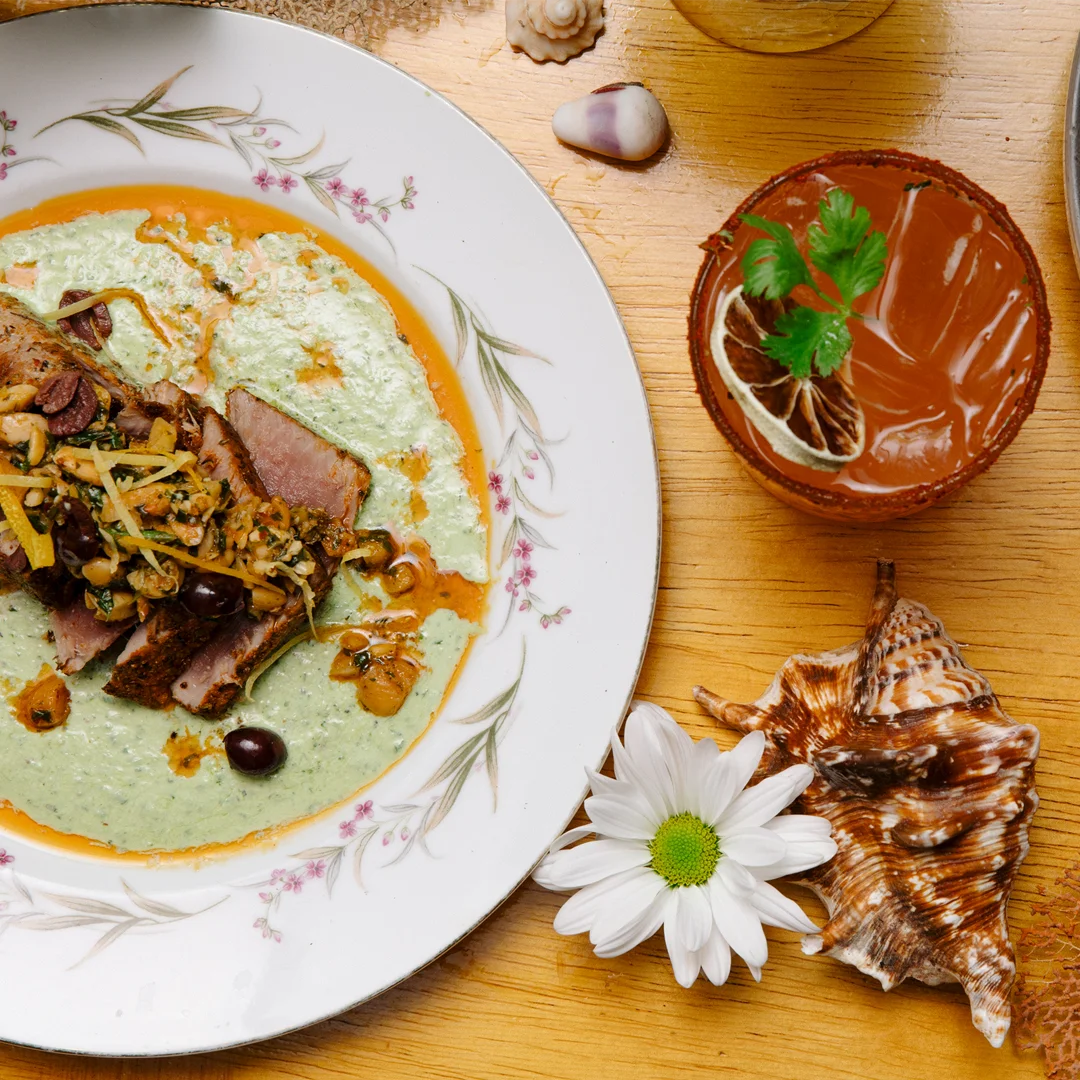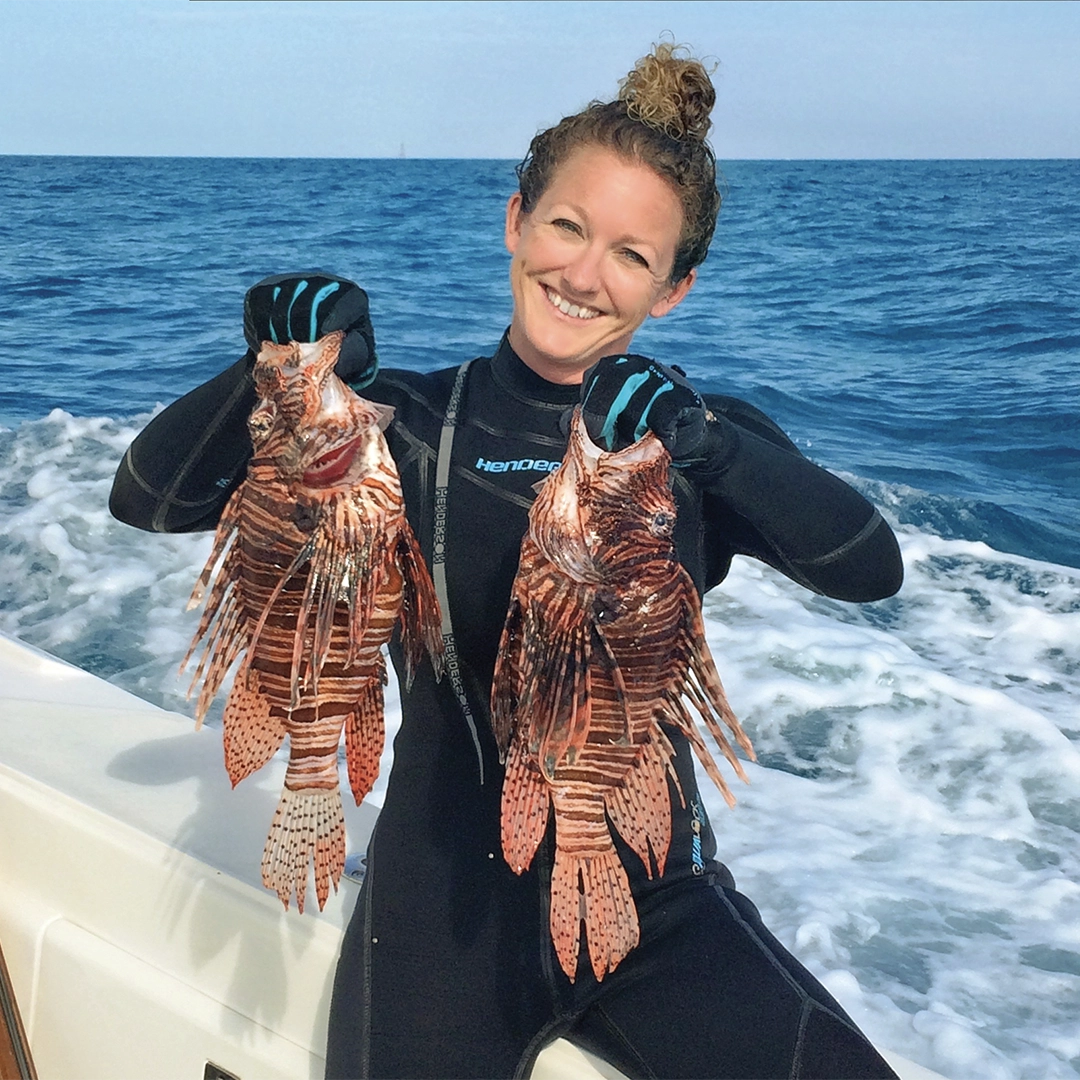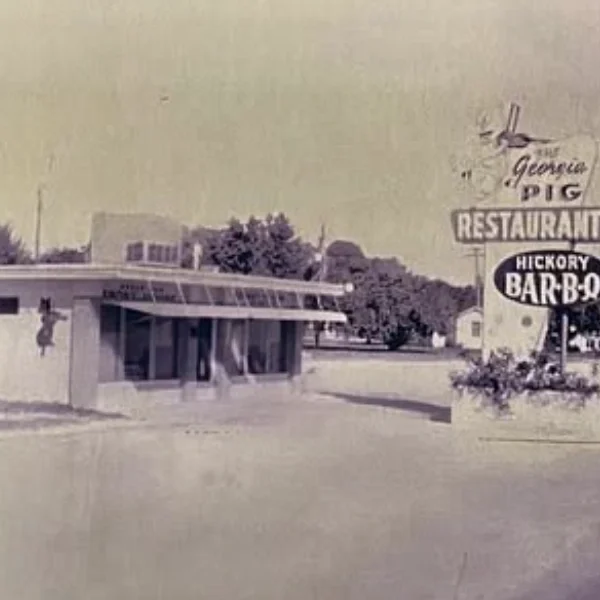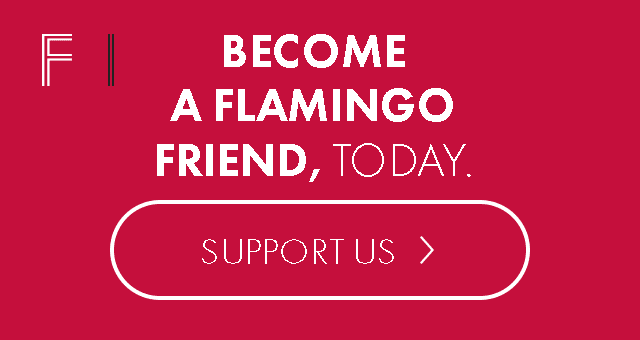by | September 8, 2025
Why Michelin-Starred Restaurants From Around the World Moved to Miami
Global restaurant groups have flooded Miami and now the city’s culinary scene has never tasted better. Here’s our guide to where the outsiders get it right.
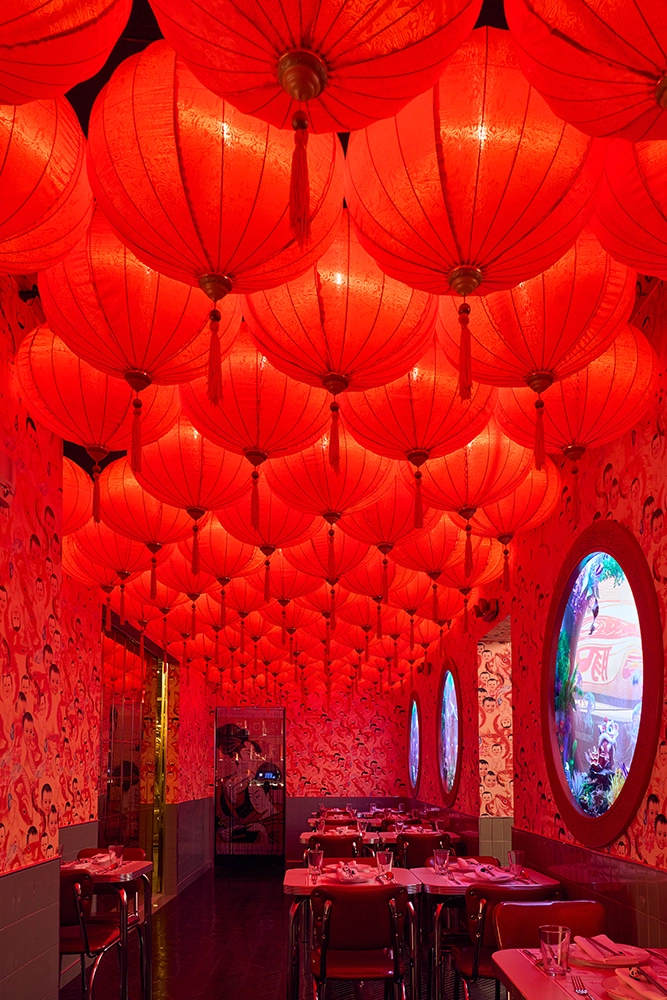
If you’re like me, you won’t find Niño Gordo until you wander into an apartment building lobby nearby and ask a security guard for assistance. After some hand gestures and charades to explain where the coveted restaurant is located, you finally realize you walked right past it a few minutes earlier. The front door, after all, is hidden down a side street, camouflaged in the middle of a gigantic mural depicting the eponymous niño gordo riding an alligator and plastered with posters that look like travel stickers on an old suitcase. There’s no sign, no hint of the neon extravaganza hidden inside.
Step through the door and a beaded curtain, and you’re transported to the neon streets of Tokyo—where a scarlet hue is cast upon everything inside, a sea of paper lanterns hangs overhead and there’s a chef’s bar so low you feel like you’re in a yoga squat when you sit down. Figurines are lined up along the bar counter—Bowser from Mario Kart, an evil version of Ronald McDonald and a rotund Cap’n Crunch—standing upright like the row of chefs behind them.
Having great hospitality only furthers a city like Miami.
—Mario Carbone
The food is as eccentric as the space: tuna tataki arrives resembling a sunflower with an egg yolk at its center as sunny as a Florida morning. There’s fried cauliflower with grapes—a combination that sort of works—and fried rice dotted with hunks of crab large enough to become islands in Biscayne Bay.
I love the ambition of it all, and the spectacle alone is worth another trip. Niño Gordo, a spin-off of the original cult classic born in Buenos Aires, is the kind of place that proves Miami isn’t just keeping up with the truly great food cities of the world. We’re starting to lead.
That happened thanks to an invasion that began just after the COVID-19 pandemic. It seemed like every New York and Los Angeles hospitality group planted their flag in our sand, and for a minute there, it felt like the city might sink from it. Local restaurateurs echoed the same fears: too many seats, not enough talent and a population already spoiled by choice.
But here’s what actually happened. These imported restaurant groups came to town, threw down velvet banquettes and vintage glassware, and forced everybody else to step up. They brought professional servers, deeper wine lists curated by sommeliers and menus built by chefs who collect Michelin trophies. They sourced from local farms and made tableside presentations into performance art.
So, in the name of research (and because I enjoy a good creme brulee as much as your average Frenchman), I set out to craft a weekend itinerary for anyone coming to Miami with an appetite for this new culinary wave. It covers neighborhoods and a dozen restaurants, all connected by a common thread: None of this would have existed here just five years ago.
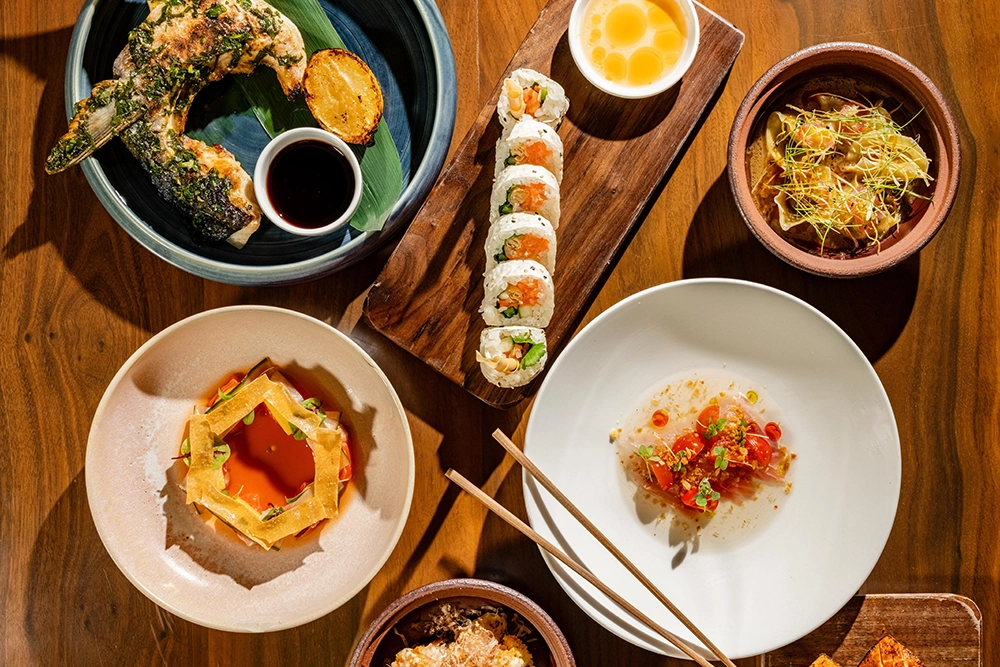
Day 1: Wynwood
You’ve arrived in town, I’m assuming, just in time for happy hour. For your first night, I’m going to suggest a Wynwood progressive. First, head to Uchi because few restaurants have figured out how to clone the high-end sushi experience like this concept from Austin. The space is undoubtedly pushing design boundaries—nicer by a mile than most places with California rolls on the menu—terraceous lights running along the ceiling, blond and brown woods that seamlessly comingle in a masterclass in sleek restaurant aesthetics.
It’s hard to imagine disliking anything at Uchi, and you should come back for the tasting menu at some point in your life. But today you’re just here for the well-priced happy hour: wagyu croquettes for $12, charcoal-seared chicken thigh skewers for $10, albacore tuna nigiri that looks airbrushed for $9 and a citrusy whisky highball for $11.
Uchi’s founder is Chef Tyson Cole, who spent his elementary-school years in Sarasota. In Austin, Cole created a restaurant that does what only the best places can do: continue, night after night, to uphold an impossibly high standard. He’s cloned his concepts now in places like Dallas, Denver, Houston, Scottsdale, West Hollywood and here in Miami. Some might even call it a chain, albeit a 24-karat gold one.
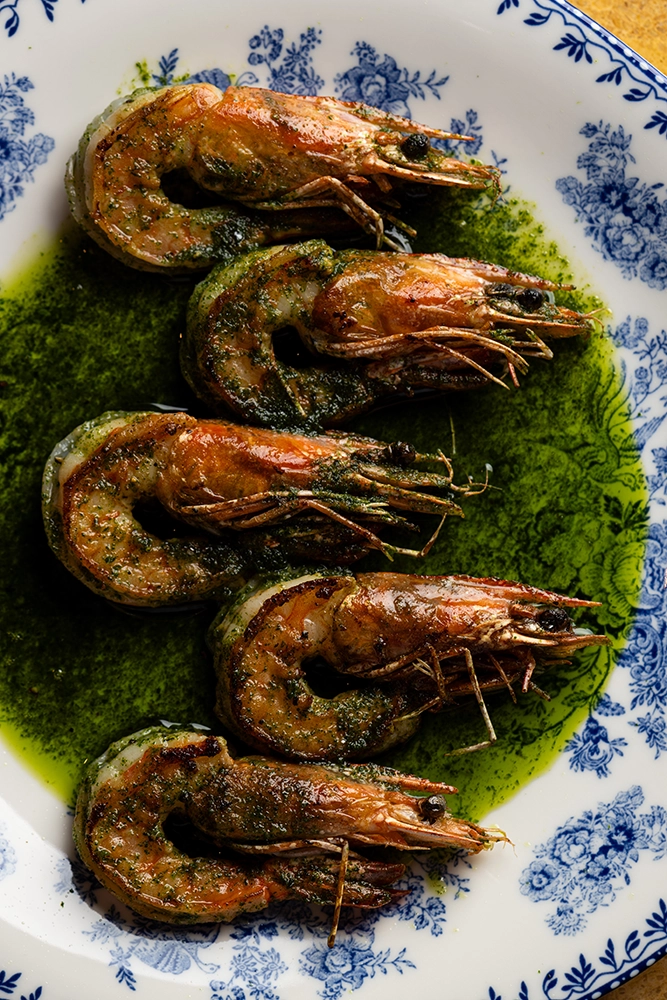
That ability to repeatedly replicate a high-quality experience reminds me of Houston’s, the first chain I can remember spreading nationwide that was a cut above an average restaurant. There are restaurateurs and chefs and servers everywhere who credit Houston’s—along with its parent company, Hillstone Restaurant Group—with teaching them how to master an exceptional dining experience. Now it’s these outside fine-dining restaurant groups that are training the next wave of servers and chefs who will almost certainly go out and open their own restaurants with what they’ve learned.
I parsed the idea during a phone call with restaurateur Evan Funke, who in the fall of 2024 introduced Miami’s Design District to his Mother Wolf concept, with its hermetically sealed room to assure the most perfect pasta-making station. It was one of the splashiest openings in the last year. Funke says he studied restaurant groups like Hillstone—and even McDonald’s—when he began cloning his restaurants elsewhere. “I’ve studied these groups extensively,” he says. “They are master operators.” Not just with food consistency but hiring, ordering, training—things that can make a good restaurant. Funke says he relishes in the idea that his places are the training ground for the next crop of Miami restaurateurs. “These are teaching restaurants. We’re not slinging hash here. We’re teaching chefs, building leadership, growing teams and getting them to work as a team.”
Back when Houston’s spread nationally two decades ago, most fine-dining-level chains in this country were steakhouses. But now many big cities have clones of places from New York and Los Angeles and, especially these days in Miami, from South American cities.
Which is why the next stop on my epicurean escape is situated just three blocks away from Uchi at the appropriately named Pasta, where a husband and wife, who brought their concept from Peru, work behind the counter. The cacio e pepe, a traditional Roman dish that’s essentially just pasta, cheese and pepper, performs a magic trick in being both delicate and intense, and there are no faults to find in the
spaghetti with confit pomodoro and ricotta.
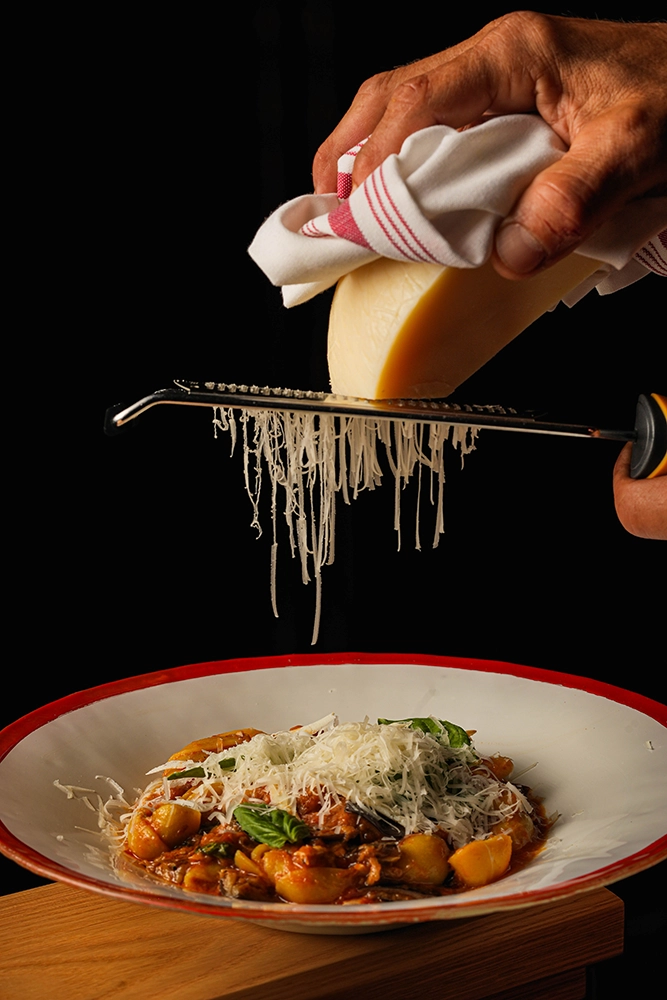
Just a block south is Otto & Pepe, where the menu reads like a love letter from Rome. Chef Viviana Varese, who created the menu, boasts Michelin credentials and a knack for sneaking vegetables into things you’d never expect. Sit at the counter, where the chefs will hand you pastas as they’re made, like the perfectly al dente orecchiette with smoky eggplant. It’ll be tempting to continue on to the cappelletti stuffed with corn and served in a basil-butter fondue, but I’ve got one more stop for you on this Wynwood guide.
Head now to Pastis—a New York expat that’s been a favorite of celebrities going back to its Meatpacking District days. If it’s nice out, ask for a table in the garden, beneath the twinkling lights and leafy trees. Or head inside to a bar where tiled walls, dark wood, antique-inspired stools and lighting the color of tobacco smoke make it feel like you’re a block from the Seine. Polish off your night with the vanilla bean creme brulee—a no-fuss version that nails it all, from the crispy top and oozy center to the warm madeleine on the side. With it, order a glass of pastis: an oddball of a black licorice drink poured slowly over ice cubes, with lots of pomp. No one in Miami captured the essence of a Parisian cafe so perfectly before Pastis—but it’s just a warm-up for all you have coming over the weekend.
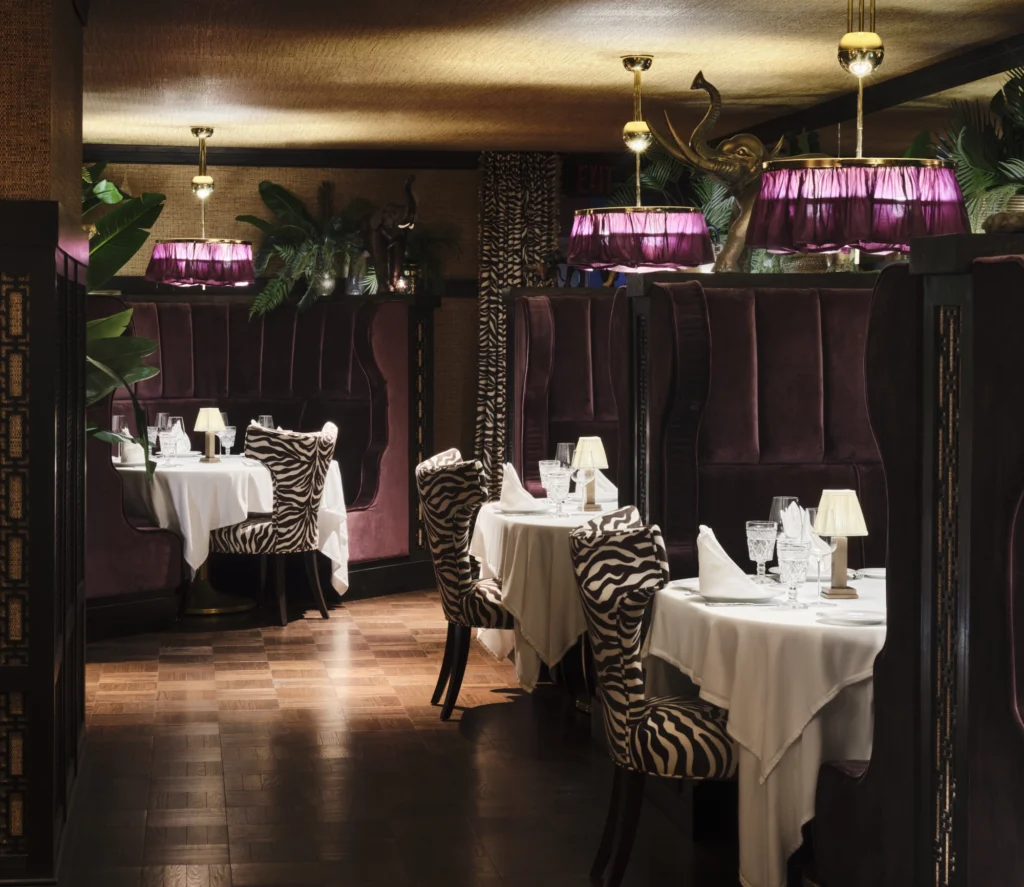
Day 2: Coconut Grove & Brickell
Begin the next day in Coconut Grove at Sadelle’s sitting outside on the sun-dappled and leafy patio—a popular destination for ladies’ brunches and the start of bachelorette weekends. Here, the bagel tower comes out looking as impressive as the skyscrapers on the bay, piled high on a tiered tea-time tray with smoked salmon sliced like silk scarves. The French toast could qualify as architecture: thick-cut brioche as big as a slice of birthday cake, as smooth as pudding in the center, crisped and caramelized along the edges. It’s brunch-as-a-background-for-a-selfie but with dishes good enough to make Sadelle’s popular without its Instagram-worthiness.
Sadelle’s is a gilded chain restaurant, brought here from New York by the Major Food Group (MFG) folks, which also dropped Carbone on Miami Beach and its sister restaurant, Carbone Vino, in the Grove. Food critics and online trolls sometimes call MFG restaurants overpriced, but these are the kinds of places to bring out-of-towners. MFG turns dinner into something exceptional with theatrical waiters and rolling trays where salads are assembled and bar areas that feel like eight-figure deals are being drawn up on napkins. We can debate the true value of Carbone’s $34 spicy rigatoni vodka, or we can appreciate that its arrival in Miami spawned all kinds of clone Italian restaurants trying to outdo it. In a Magic City twist on the metaphor, the rising sea level lifts all boats.
The MFG invasion began during COVID, when Mario Carbone put together a Zoom call with the staff of his New York restaurants and made an announcement: We’re moving to Miami. With the city open months before anywhere else, Carbone opened his namesake restaurant on the beach, and it immediately became the toughest reservation to get in the city. During a phone call with Carbone, I asked him about how locals in the industry feared all these restaurant groups at first. “I can’t imagine there’s been a negative effect,” he says. “Having great hospitality only furthers a city like Miami.” Any great restaurant already here before these outsiders arrived is likely doing well now, pointing to the fact that Joe’s Stone Crabis still the nation’s most profitable restaurant, with $49 million in sales in 2024. “Great places,” Carbone says, “are always going to be warranted and always be needed.”
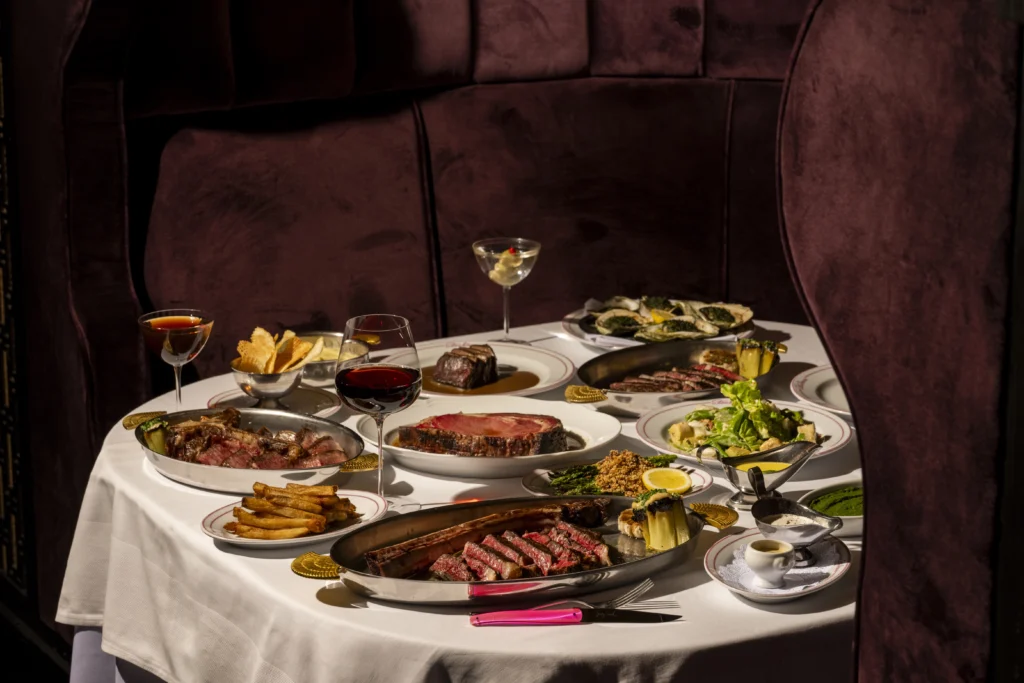
In other words, there’s plenty of room for well-executed restaurants like Sadelle’s. Polishing off the bagel tower, however, will likely keep you satiated until the afternoon, so slowly drift your way to Brickell and land at Delilah just in time for happy hour. The Los Angeles transplant has the feel of a midcentury supper club—the plush booths and raindrop chandeliers and the red-haired singer in her green silk dress all come together like a lovely plating of nostalgia. Matching is Delilah’s happy hour menu, featuring chicken tenders, pigs in a blanket and a half-off martini that’s so cold you have to put the glass down between sips. Some scoff at the food of our childhoods being served as fine dining, but I appreciate a restaurant that reinvents hot dogs wrapped in canned bread by using mini wagyu beef dogs, seeded croissants, grainy mustard and Périgord black truffles.
Dinner awaits a block away at Claudie, the French Mediterranean dreamscape with a limestone fountain and a dining room with a collage of artwork so perfectly mismatched you might just take a photo to help plan your remodel. The owner is Riviera Dining Group, started by husband-and-wife team Gregory Galy and Marine Giron-Galy. Originally from Los Angeles, they opened some of the country’s most profitable restaurants, including Mila on Miami Beach, which the ownership told me grossed $52 million in 2023. Its success over the past four years has served as a beacon, attracting other restaurant groups to flood Miami. The chef who oversees Claudie, Michaël Michaelidis, has cooked at restaurants that have accumulated a total of 26 stars from the Michelin Guide. It’s here that Michaelidis makes the food of his home in France: a salad niçoise that fans out like somebody spent an hour plating it, snail shells stuffed with herbed butter and a sea bass deboned tableside and presented with the importance of an engagement ring. Through it all, the staff glides through the room like Alvin Ailey choreographed them.
Try not to order too much because afterward you’ll head to the basement of a high-rise for Dirty French, an MFG-created steakhouse with zebra-print armchairs and servers in ruffled shirts and pink tuxedo jackets—it’s all Vegas-like in its outrageousness. I’d recommend lingering in the lounge, where the gin martini comes with a twist or onions. End the night with an extravagance, like the classic caviar service—a thing that wasn’t found much in Miami before restaurants like this showed up. Nowadays, many places are putting “bumps” of caviar on people’s hands such as restaurant Oro, brought to Lincoln Road by a New York restaurant group. Say what you will about social-media-fueled trends, but the world is better with more caviar.
Perhaps you’ll end the night at Dirty French with hot beignets or a mint sundae. But remember: There’s still tomorrow and two meals of house-made pasta waiting.
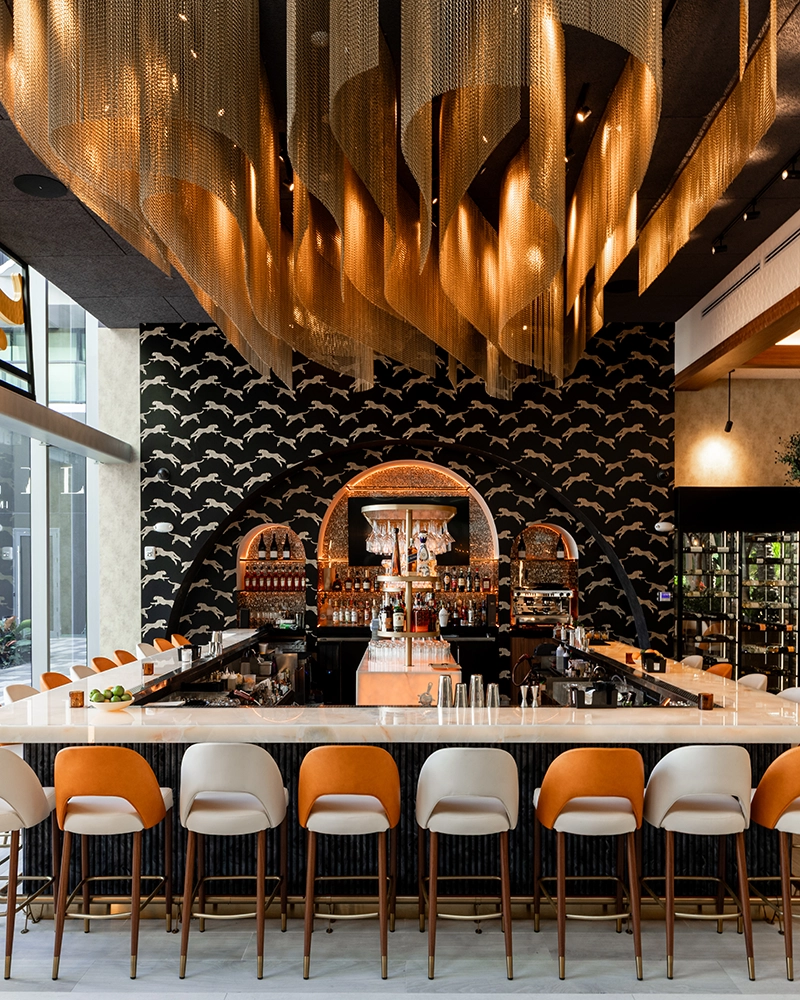
Day 3: Downtown & The Beach
Lunch on Sunday is at Serafina in the new Miami Worldcenter development. No experimental chef-driven dishes here—Serafina is a restaurant where dishes are crowd-pleasers, like the lemon bowtie pasta and cacio e pepe, which is cooked tableside and tossed in a cheese wheel.
It’s a place that reminds me of Carrabba’sback in the day. I know what you’re thinking, but hear me out. Not because the food is in any way similar, but because in the 1990s, Carrabba’s took Italian American food as it was defined at the time and reproduced it at restaurants across America—including in West Palm, where I was living at the time. Back then, I could count the city’s good restaurants on one hand, and I’d wait two hours for a table at Carrabba’s and a plate of Chicken Bryan. Serafina did something similar in taking Italian dishes that are decidedly a step better—and more expensive—and then cloning itself all over New York, before coming to downtown Miami this year. To be sure, I’d recommend a half dozen homegrown Italian spots before Serafina (like the excellent Macchialina or Boia De), but I suspect you’ll still fall deeply in love with every plate of pasta draped with a lobster tail here at the upscale version of Carrabba’s.
Your final meal is at The Surf Club Restaurant—a Michelin-starred restaurant that has arguably done more for this city than any other import—inside Surfside’s Four Seasons Hotel. It redefined the idea of an anniversary dinner. It’s owned by Thomas Keller, the famed chef from California’s French Laundry and holder of seven Michelin stars. Here he does a nostalgic menu of French onion dip with kettle chips, oysters Rockefeller and linguine with clams. All of it is wildly expensive—$24 for chips and dip!—but this is a place where all the theatrics and hoity-toityness of fine dining is replaced with a Rat Pack soundtrack, pro waiters who make jokes with you and just simply a place that feels welcoming in a way that most top-end restaurants do not.
It’s not just that The Surf Club is a very good restaurant. It’s also that it trains line cooks and servers and maitre d’s who will eventually leave for other places or open their own spots and spread their culinary intellect around Miami, cloning the very good ideas taught to them by the one and only Thomas Keller.
Cap off your experience at The Surf Club with the ice cream sundae, which is assembled tableside from toppings selected by you from a cart full of goodies: chocolate sauce, cherries, sprinkles, whipped cream as fluffy as the clouds over the Atlantic. You’re a kid again, tippy-toed at the counter of the ice cream shop, and what’s better than a meal that sends you into a fit of nostalgia?
Miami hasn’t lost itself to the outsiders. We’ve learned from them. We’ve borrowed their polish and mixed it with our melting pot of a restaurant culture. We took their white tablecloths and spilled mojitos on them. What we have now is a dining scene that finally feels grown up—a little flash, a little fire and a lot of something special.
For more on Florida’s cuisine and dining culture, click here.
About the Author
Eric has been a journalist in Florida for two decades, including stints at newspapers in Fort Pierce, Stuart and Sarasota. His role at Flamingo includes everything from interviewing chefs to first-line editing on cover stories and penning our monthly culinary newsletter, Key Lime.

